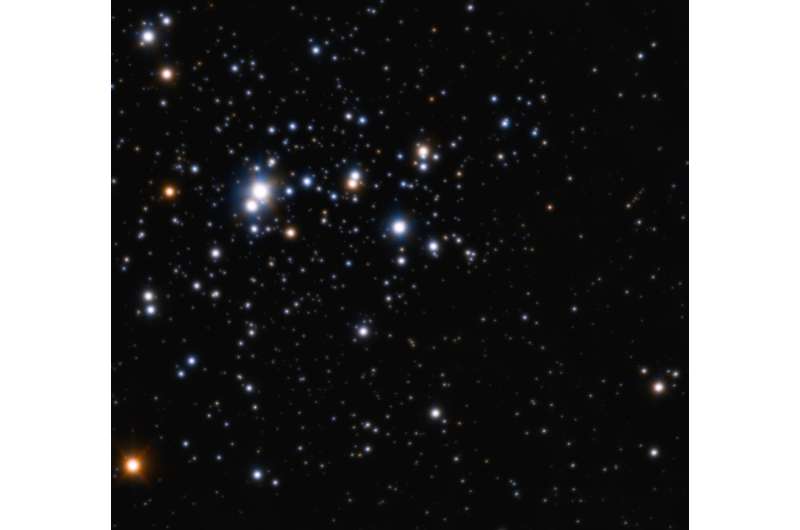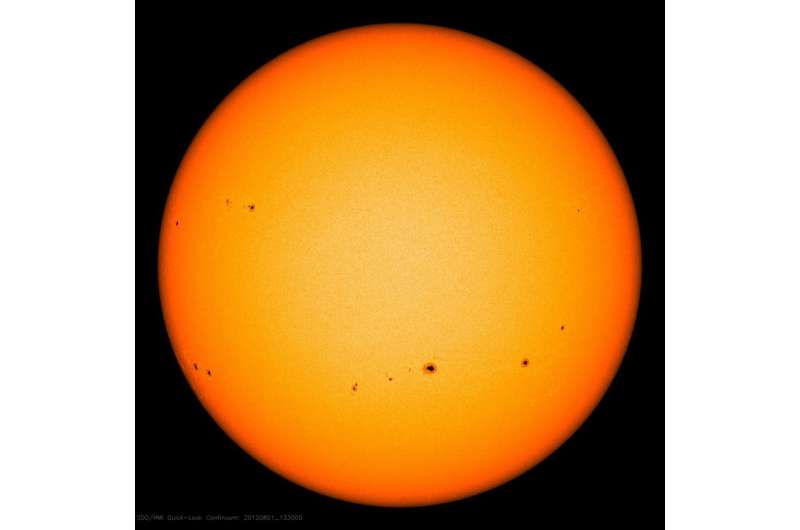A solar sibling identical to the sun

An international team led by Instituto de Astrofísica e Ciências do Espaço (IA) researcher Vardan Adibekyan used a novel method to detect solar siblings. The article was published in the journal Astronomy & Astrophysics.
Solar siblings are the thousands of stars which formed in the same massive cluster as the sun, about 4.6 billion years ago. As time went by, the stars in the cluster disbanded and scattered throughout the galaxy, making it very difficult to find them.
Vardan Adibekyan (IA & University of Porto) explains the importance of finding these stars: "Since there isn't much information about the sun's past, studying these stars can help us understand where in the Galaxy and under which conditions the sun was formed."
He adds, "With the collaboration of Patrick de Laverny and Alejandra Recio-Blanco, from the Côte d"Azur observatory, we got a sample of 230 000 spectra from the AMBRE project." AMBRE is a galactic archaeology project set up by ESO and the Observatoire de la Côte d"Azur, in order to determine the stellar atmospheric parameters for the archived spectra from ESO's FEROS, HARPS, UVES and GIRAFFE spectrographs.
Next, the team used these very high quality spectral data from the AMBRE project together with very precise astrometric data retrieved from the second release of ESA's GAIA mission, in order to "make a selection of stars with chemical compositions which best match the sun's composition, followed by an estimate of these stars age and kinematic properties," said Vardan Adibekyan.

Although only a single solar sibling was found in this work, HD186302, it was a special one. This G3-type main sequence star is not only a solar sibling by both age and chemical composition, but it is also a solar twin.
Solar siblings might also be good candidates to search for life since there is a possibility that life could have been transported between planets around stars of the solar cluster. The transfer of life between exoplanetary systems is called interstellar lithopanspermia.
Adibekyan is cautiously excited about this possibility: "Some theoretical calculations show that there is non-negligible probability that life spread from Earth to other planets or exoplanetary systems, during the period of the late heavy bombardment. If we are lucky, and our sibling candidate has a planet, and the planet is a rocky type, in the habitable zone, and finally if this planet was 'contaminated' by the life seeds from Earth, then we have what one could dream – an Earth 2.0, orbiting a sun 2.0."
The team at IA plans to start a campaign to search for planets around this star using both HARPS and ESPRESSO spectrographs. Finding and characterizing planetary systems around solar siblings could return very important information about the outcome of planet formation in a common environment.
More information: V. Adibekyan et al. The AMBRE project: searching for the closest solar siblings, Astronomy & Astrophysics (2018). DOI: 10.1051/0004-6361/201834285
Journal information: Astronomy & Astrophysics
Provided by Astrofísica e Ciências do Espaço



















